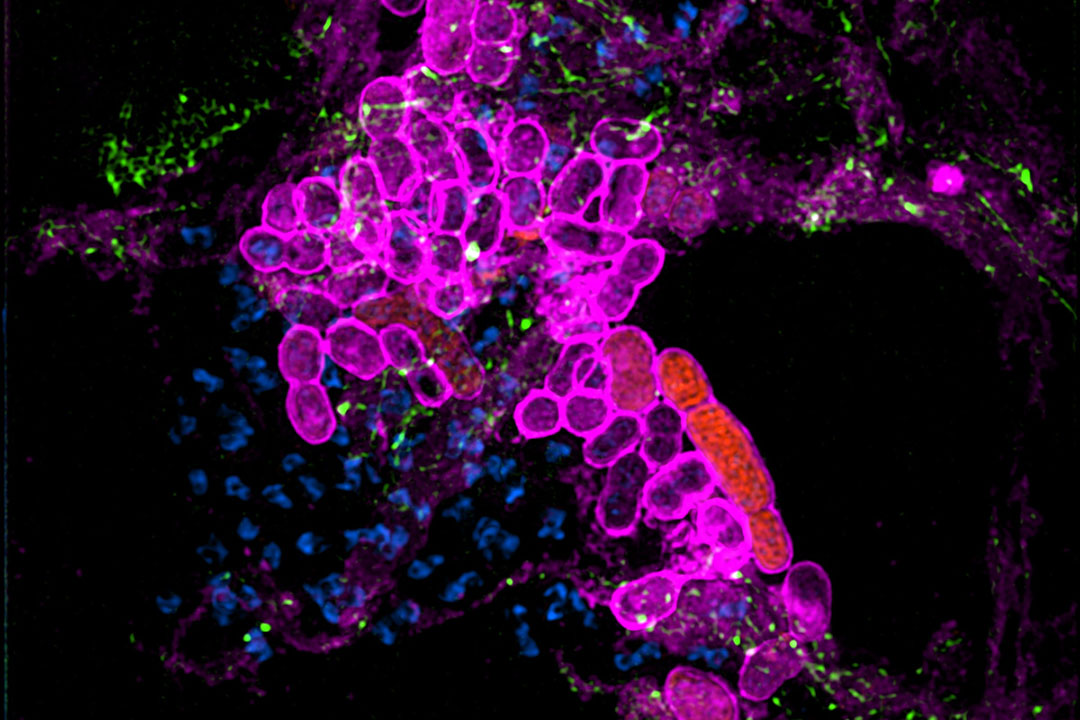
Winning ‘battle for metals’ key to defeating antibiotic-resistant bacterium: USask research
SASKATOON – Lock up the silverware! According to new research from the University of Saskatchewan (USask), that’s how the body responds to Acinetobacter baumannii, a nasty pathogen commonly found in hospitals across the globe.

When this type of antibiotic-resistant bacteria infects a host, the host responds by starving the bug of metals—nutrients essential for the bacteria’s survival. These are the first salvos in an escalating battle to infect or defend the host, according to research recently published in PLOS Pathogens.
“As with all forms of life, microbes require nutrient metals for their survival and growth,” said Dr. Jessica Sheldon (PhD), microbiologist in USask’s College of Medicine and lead author of the study. “Limiting access to these metals is one method the host can use to control infection.”
In 2017, the World Health Organization named multidrug-resistant A. baumannii to the No.1 spot of its “priority pathogen” list—a catalogue of bacteria posing the greatest threat to human health, and urgently requiring research and development into novel therapeutic approaches.
According to research from the Canadian Nosocomial Infection Surveillance Program, the incidence rate of A. baumannii in Canada is low—only 0.015 cases per 1,000 hospital admissions, but for every 100 people infected with A. baumannii, nearly one quarter will die as a result.
Where some bacteria rely on toxins, A. baumannii’s strength lies in its ability to adapt to harsh environments—drying out, disinfecting, and exposure to highly acidic or basic conditions make the bacteria produce a biofilm. Like pond scum or dental plaque, these biofilms allow the pathogen to attach to surfaces, and survive and thrive in hospital environments until a suitable host is found.
But acquiring metals such as iron, zinc, and manganese are key to how harmful A. baumannii can become. When bacteria are mutated or impaired for the ability to acquire metals, the outcomes of infection are often far less severe.
“Iron plays a particularly important role in A. baumannii infection,” said Sheldon.
In vitro and in a mouse model, the researchers identified that a particular protein the host produces, Lipocalin-2, is essential to controlling disease severity. Producing the protein restricts how much iron the bacteria get, reducing the likelihood of the host dying due to blood infection, and inhibiting the bacteria’s growth in the infected lungs.
The pathogen, in turn, launches several countermeasures that allow it to acquire iron.
“During this ‘battle for metals,’ A. baumannii produces small iron binding molecules,” said Sheldon. “These molecules are capable of binding iron so tightly that they can wrestle it away from proteins in the host, and then deliver it back to the bacteria. Lipocalin-2 in turn, can sequester some of these molecules, rendering them ineffective and setting up an evolutionary arms race between the host and pathogen over metal.”
“To develop new drugs or strategies to treat infections, we need to have a better idea of how the host resists infection, and how the bacterium overcomes this resistance,” said Sheldon. “Our data suggest that therapeutics that bolster the ability of the host to restrict iron availability … may represent viable pathways for drug development.”
A. baumannii causes devastating infections, such as sepsis and ventilator-associated pneumonia. Outbreaks have been associated with the ongoing COVID-19 pandemic, causing infections in critically ill, ventilated patients.
“Once it gets into a hospital environment, it can be extremely hard to get rid of,” said Sheldon.
The next steps in the research involve a collaboration with Dr. Ninad Mehta (PhD) at Saskatoon’s Royal University Hospital to determine if A. baumannii found here differs genetically from bacteria found globally. The results may provide clues as to why the pathogen is less prevalent in Canada than elsewhere.
The research was completed while Sheldon was finishing a post-doctoral fellowship at Vanderbilt University Medical Center in Nashville, Tenn., supervised by Dr. Eric Skaar (PhD), and working with Drs. Lauren Himmel (DVM, PhD), Dillon Kunkle (PhD), Andrew Monteith (PhD), and research specialist Nichole Maloney, and funded by the Canadian Institutes of Health Research, and the National Institutes of Health.
-30-
For media inquiries, contact:
Victoria Dinh
USask Media Relations
306-966-5487
victoria.dinh@usask.ca
Article re-posted on .
View original article.

